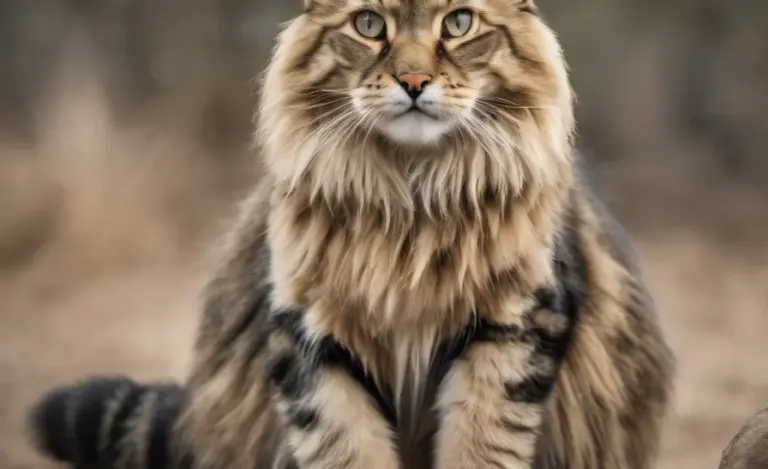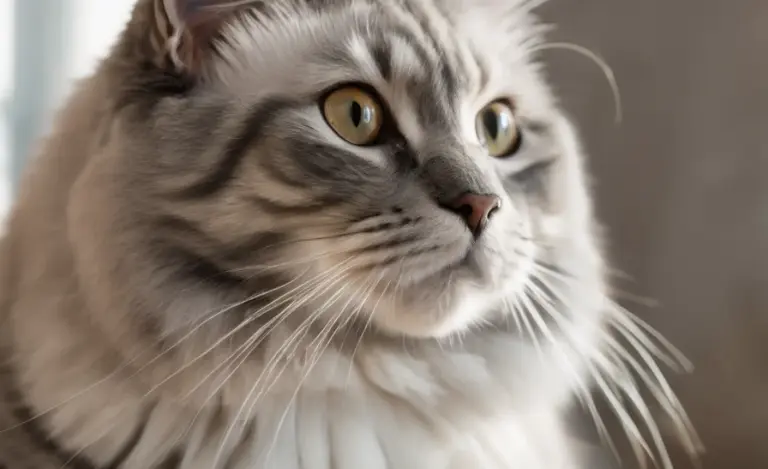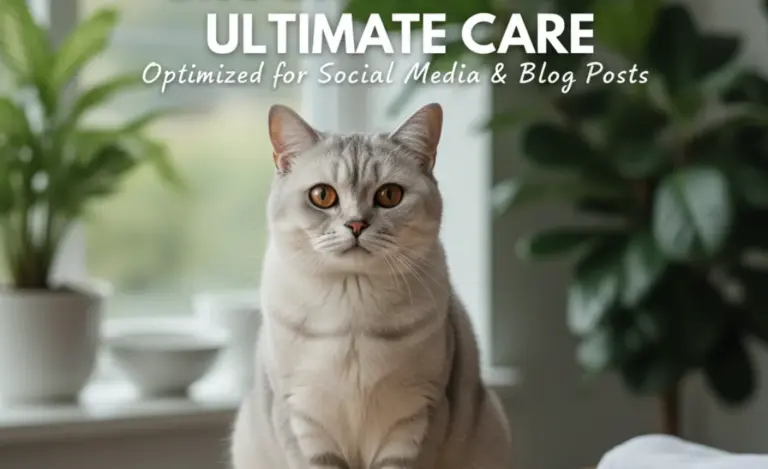British Shorthair Special Needs Cats: A Loving Guide
Quick Summary: Caring for a British Shorthair with special needs requires extra love and attention. It involves understanding their specific condition, adjusting their environment for comfort and safety, providing specialized veterinary care, and offering plenty of patience and affection. With the right approach, these cats can live happy, fulfilling lives.
Bringing a British Shorthair into your life is a joyous experience. Their calm demeanor and plush coats make them wonderful companions. But what happens when your beloved British Shorthair has special needs? It might feel overwhelming, but with the right knowledge and a caring approach, you can provide a loving and supportive home. Many cats with special needs live full and happy lives with owners who understand their requirements.
This guide will walk you through the essential steps of caring for a British Shorthair with special needs. We’ll cover everything from identifying common health issues to creating a comfortable environment and ensuring they receive the best possible care. Let’s embark on this journey together!
Understanding British Shorthair Special Needs

British Shorthairs, while generally healthy, can sometimes develop conditions that require special care. Recognizing these potential issues early is crucial for providing the best possible life for your feline friend.
Common Health Issues in British Shorthairs
Certain health conditions are more prevalent in British Shorthairs. Knowing these can help you watch for early signs and seek timely veterinary care.
- Hypertrophic Cardiomyopathy (HCM): This is a heart condition where the heart muscle thickens, making it harder for the heart to pump blood efficiently. Regular check-ups and screenings can help detect HCM early. According to the Cornell Feline Health Center, HCM is one of the most common heart diseases in cats, emphasizing the importance of awareness and monitoring.
- Polycystic Kidney Disease (PKD): PKD is an inherited condition that causes cysts to form in the kidneys, eventually leading to kidney failure. Genetic testing can identify carriers of the PKD gene.
- Hip Dysplasia: Although more common in dogs, hip dysplasia can occur in British Shorthairs. It affects the hip joint, causing pain and mobility issues. Maintaining a healthy weight can help manage the symptoms.
- Arthritis: As they age, British Shorthairs may develop arthritis, leading to joint pain and stiffness. Managing their weight, providing comfortable bedding, and consulting with your vet about pain management options can improve their quality of life.
- Diabetes: Diabetes can occur in British Shorthairs, often managed with insulin injections and dietary changes. Recognizing the symptoms early can help prevent serious complications.
Recognizing Signs of Special Needs
Early detection is key. Be vigilant and watch for any changes in your cat’s behavior or physical condition. Here are some signs that might indicate your British Shorthair needs special care:
- Changes in appetite or weight: Sudden weight loss or gain can be a sign of an underlying health issue.
- Lethargy or decreased activity: If your cat is less playful or sleeps more than usual, it could indicate a problem.
- Difficulty breathing or coughing: These could be signs of heart or respiratory issues.
- Changes in litter box habits: Straining to urinate, increased frequency, or blood in the urine can signal urinary tract problems or kidney disease.
- Lameness or stiffness: Difficulty walking or jumping can indicate arthritis or hip dysplasia.
- Behavioral changes: Increased aggression, hiding, or excessive vocalization can be signs of pain or discomfort.
If you notice any of these signs, consult your veterinarian promptly. Early diagnosis and treatment can significantly improve your cat’s quality of life.
Creating a Comfortable and Safe Environment
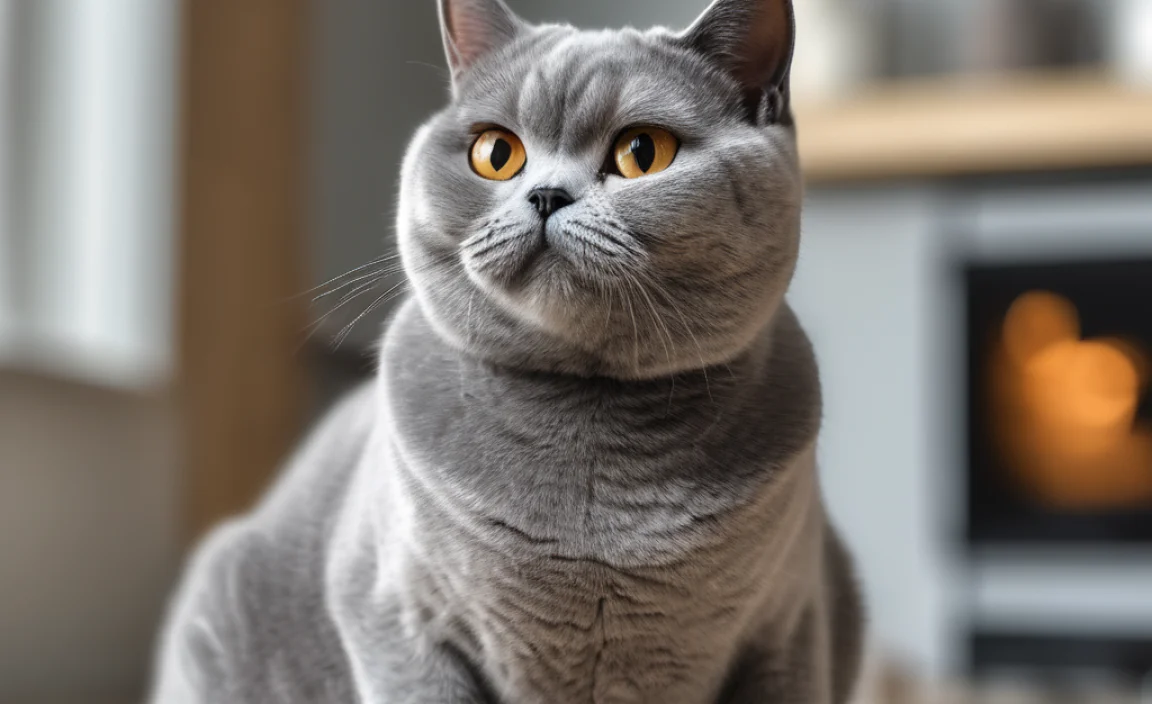
A comfortable and safe environment is crucial for any cat, but especially for those with special needs. Making a few adjustments can make a big difference in their well-being.
Adapting Your Home
Consider these modifications to make your home more accessible and comfortable for your British Shorthair:
- Soft Bedding: Provide orthopedic beds or soft, padded areas for resting. This is especially important for cats with arthritis or hip dysplasia.
- Accessible Litter Boxes: Use litter boxes with low sides for easy access, particularly if your cat has mobility issues. Place multiple litter boxes around the house.
- Ramps and Steps: Install ramps or steps to help your cat reach their favorite spots, such as the bed or windowsill.
- Non-Slip Surfaces: Use rugs or mats on slippery floors to prevent falls and injuries.
- Safe Hiding Places: Ensure your cat has access to quiet, safe spaces where they can retreat if they feel overwhelmed or anxious.
Maintaining a Stress-Free Zone
Stress can exacerbate many health conditions. Create a calm and predictable environment for your British Shorthair.
- Consistent Routine: Cats thrive on routine. Maintain a regular feeding and playtime schedule.
- Quiet Environment: Minimize loud noises and sudden changes in the environment.
- Safe from Hazards: Ensure that household cleaners, medications, and other potential toxins are stored safely out of reach.
- Calming Aids: Consider using pheromone diffusers, such as Feliway, to help reduce anxiety and promote relaxation.
Providing Specialized Veterinary Care
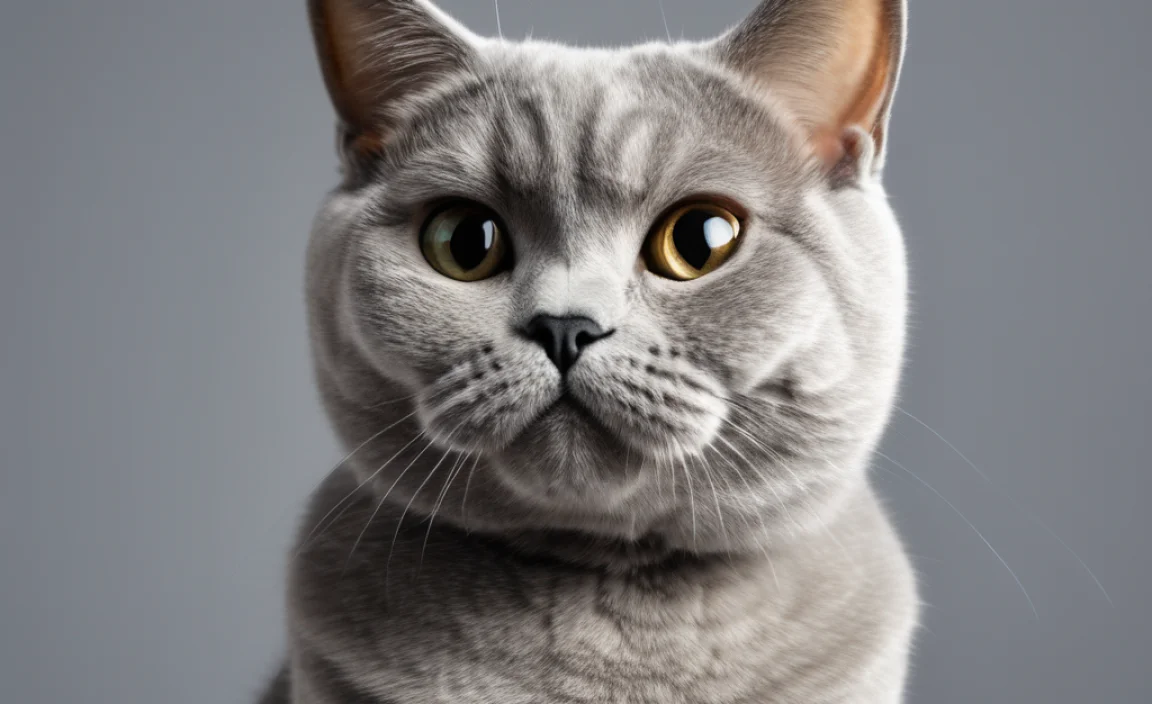
Regular veterinary care is essential for all cats, but those with special needs require more frequent and specialized attention.
Regular Check-ups
Schedule regular check-ups with your veterinarian to monitor your cat’s condition and adjust treatment plans as needed. These visits allow your vet to:
- Monitor Chronic Conditions: Regularly assess conditions like HCM, PKD, or diabetes.
- Adjust Medications: Fine-tune medication dosages to ensure optimal effectiveness and minimize side effects.
- Provide Preventative Care: Administer vaccinations and parasite control to protect your cat from other illnesses.
- Early Detection: Identify any new health issues early on.
Working with Specialists
Depending on your cat’s specific needs, you may need to consult with veterinary specialists.
- Veterinary Cardiologist: For cats with HCM or other heart conditions.
- Veterinary Nephrologist: For cats with PKD or other kidney issues.
- Veterinary Orthopedist: For cats with hip dysplasia or arthritis.
- Veterinary Neurologist: For cats with neurological conditions.
Medication Management
If your British Shorthair requires medication, follow your veterinarian’s instructions carefully. Here are some tips for successful medication management:
- Administering Pills: Use pill pockets or hide the pill in a small amount of wet food.
- Liquid Medications: Use a syringe to administer liquid medications directly into your cat’s mouth.
- Transdermal Medications: Apply transdermal medications to the skin as directed by your veterinarian.
- Consistency: Administer medications at the same time each day to maintain consistent blood levels.
- Monitoring: Watch for any side effects and report them to your veterinarian promptly.
Nutritional Needs for Special Needs Cats
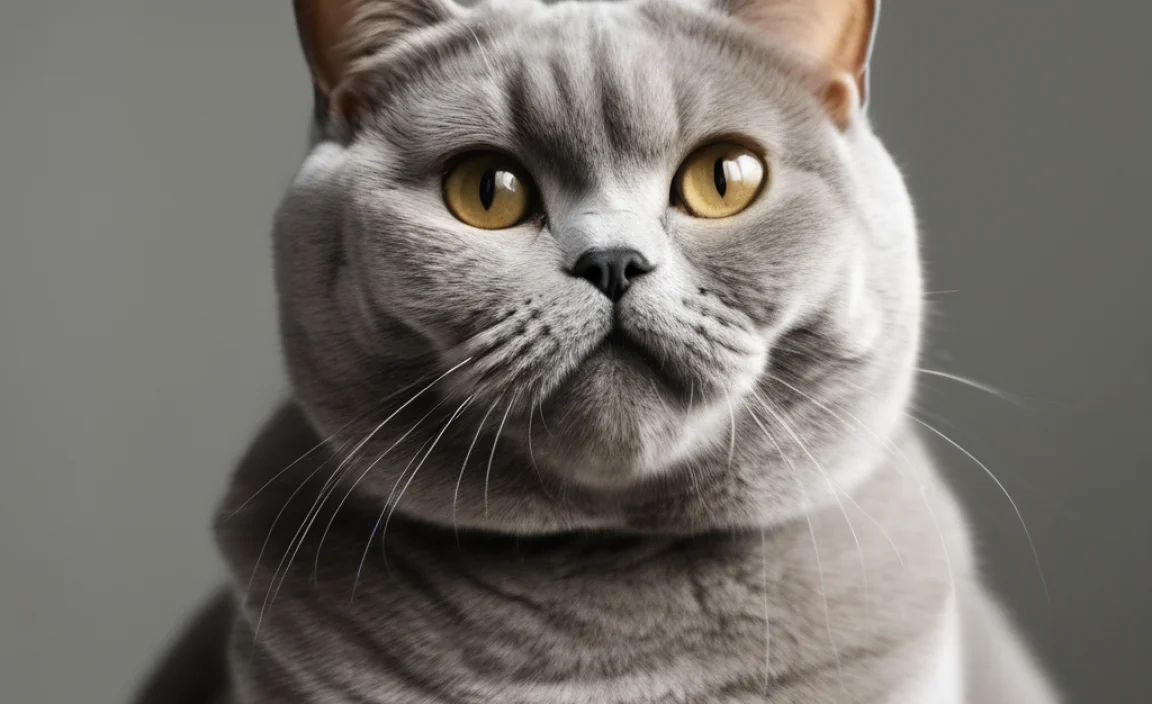
Proper nutrition is vital for managing many health conditions in British Shorthairs. Work with your veterinarian to develop a diet that meets your cat’s specific needs.
Dietary Considerations
Here are some dietary considerations for cats with common health issues:
- Kidney Disease: A diet low in phosphorus and protein can help slow the progression of kidney disease.
- Diabetes: A high-protein, low-carbohydrate diet can help regulate blood sugar levels.
- Heart Disease: A diet low in sodium can help manage fluid retention and blood pressure.
- Arthritis: A diet rich in omega-3 fatty acids can help reduce inflammation and joint pain.
- Weight Management: For overweight cats, a calorie-controlled diet can help them lose weight gradually and safely.
Choosing the Right Food
Selecting the right food can significantly impact your cat’s health. Consider these factors when choosing a diet:
- Quality Ingredients: Look for foods made with high-quality protein sources and minimal fillers.
- Specific Formulas: Choose formulas designed for specific health conditions, such as kidney disease or diabetes.
- Wet vs. Dry Food: Wet food can help increase water intake, which is beneficial for cats with kidney or urinary issues.
- Consult Your Vet: Always consult with your veterinarian before making significant changes to your cat’s diet.
Feeding Strategies
How you feed your cat is just as important as what you feed them. Here are some feeding strategies to consider:
- Portion Control: Measure food portions carefully to prevent overfeeding.
- Multiple Small Meals: Feeding multiple small meals throughout the day can help regulate blood sugar levels and prevent digestive upset.
- Puzzle Feeders: Use puzzle feeders to encourage mental stimulation and slow down eating, which can help with weight management.
- Fresh Water: Always provide access to fresh, clean water. Consider using a water fountain to encourage drinking.
Grooming and Hygiene for Special Needs Cats
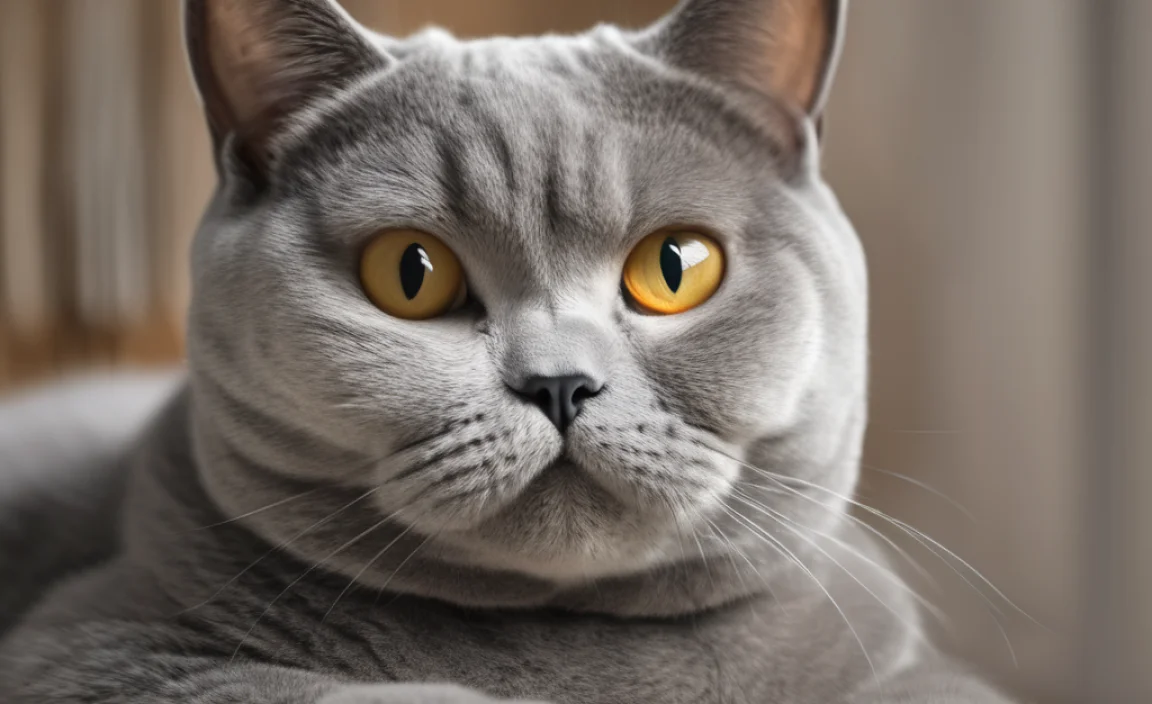
Grooming and hygiene are essential aspects of caring for a British Shorthair, especially one with special needs. Regular grooming helps maintain their coat, prevents matting, and allows you to check for any skin issues or abnormalities.
Gentle Grooming Techniques
When grooming a cat with special needs, gentleness is key. Here are some tips to make the process as comfortable as possible:
- Short Sessions: Keep grooming sessions short and frequent to avoid overwhelming your cat.
- Soft Brushes: Use soft-bristled brushes to avoid irritating sensitive skin.
- Avoid Painful Areas: Be extra gentle around areas affected by arthritis or other painful conditions.
- Positive Reinforcement: Reward your cat with treats and praise to create a positive association with grooming.
Coat Care
British Shorthairs have dense coats that require regular brushing to prevent matting and hairballs.
- Brushing Frequency: Brush your cat several times a week to remove loose hair and prevent mats.
- De-Matting Tools: Use de-matting tools carefully to remove any existing mats. If the mats are severe, consult a professional groomer.
- Bathing: Bathe your cat only when necessary, using a gentle, cat-specific shampoo.
Hygiene Practices
Maintaining good hygiene is crucial for preventing infections and other health problems.
- Litter Box Maintenance: Keep the litter box clean by scooping it daily and changing the litter regularly.
- Dental Care: Brush your cat’s teeth regularly to prevent dental disease. Use a cat-specific toothbrush and toothpaste.
- Nail Trimming: Trim your cat’s nails regularly to prevent them from becoming overgrown and causing discomfort.
- Ear Cleaning: Clean your cat’s ears regularly with a veterinarian-approved ear cleaner.
Providing Emotional Support
Cats with special needs often require extra emotional support. Providing a loving and supportive environment can significantly improve their quality of life.
Understanding Their Needs
Pay attention to your cat’s body language and behavior to understand their emotional needs. Are they seeking more attention than usual? Are they hiding or acting withdrawn? These behaviors can indicate that they are feeling stressed or anxious.
Creating a Bond
Building a strong bond with your cat can provide them with a sense of security and comfort.
- Spend Quality Time: Set aside time each day to interact with your cat. This could involve petting, playing, or simply sitting quietly together.
- Speak Softly: Use a calm and gentle voice when talking to your cat.
- Positive Reinforcement: Use treats and praise to reward positive behaviors.
- Respect Their Space: Allow your cat to approach you on their own terms. Avoid forcing interactions.
Enrichment Activities
Providing mental and physical enrichment can help reduce stress and boredom.
- Interactive Toys: Use interactive toys to engage your cat’s hunting instincts.
- Scratching Posts: Provide scratching posts to allow your cat to stretch and scratch, which is a natural behavior.
- Window Perches: Allow your cat to look out the window and observe the world outside.
- Puzzle Toys: Use puzzle toys to challenge your cat’s problem-solving skills.
Assistive Devices and Technologies
Several assistive devices and technologies can improve the quality of life for British Shorthairs with special needs. These tools can help manage mobility issues, provide support, and enhance overall comfort.
Mobility Aids
For cats with mobility challenges, such as arthritis or hip dysplasia, mobility aids can make a significant difference.
- Ramps and Steps: As mentioned earlier, ramps and steps can help cats reach elevated surfaces like beds and windowsills more easily.
- Cat Wheelchairs: In severe cases of mobility impairment, a cat wheelchair can provide support and allow the cat to move around more freely.
- Support Harnesses: Support harnesses can help you assist your cat with walking and provide stability.
Assistive Technologies
Technological advancements have led to various assistive devices that can improve the lives of special needs cats.
- Automatic Feeders: Automatic feeders can dispense food at set times, which is especially helpful for cats with diabetes or those requiring strict portion control.
- Water Fountains: Water fountains encourage cats to drink more water, which is beneficial for cats with kidney or urinary issues.
- Smart Litter Boxes: Smart litter boxes can monitor your cat’s litter box habits and alert you to any changes that could indicate a health problem.
- Pet Cameras: Pet cameras allow you to monitor your cat remotely and ensure they are safe and comfortable.
Comfort and Support Devices
Various devices can enhance the comfort and support provided to special needs cats.
- Heated Beds: Heated beds can provide warmth and comfort for cats with arthritis or other conditions that cause joint pain.
- Orthopedic Beds: Orthopedic beds provide extra support for joints and muscles, making them ideal for cats with mobility issues.
- Elevated Food and Water Bowls: Elevated bowls can make it easier for cats with neck or back pain to eat and drink comfortably.
Financial Considerations
Caring for a British Shorthair with special needs can be more expensive than caring for a healthy cat. It’s important to be prepared for the potential financial costs associated with their care.
Budgeting for Care
Create a budget that includes the following expenses:
- Veterinary Care: Include the cost of regular check-ups, specialist visits, and emergency care.
- Medications: Factor in the cost of any medications your cat requires.
- Specialized Food: Budget for any specialized food or supplements your cat needs.
- Assistive Devices: Include the cost of any assistive devices, such as ramps, steps, or wheelchairs.
- Grooming: Consider the cost of professional grooming if you are unable to groom your cat yourself.
Pet Insurance
Pet insurance can help offset the costs of veterinary care. Research different pet insurance plans to find one that meets your needs and budget. Consider factors such as:
- Coverage: What types of conditions and treatments are covered?
- Deductibles: How much do you need to pay out-of-pocket before the insurance kicks in?
- Premiums: How much will you pay each month or year for the insurance?
- Exclusions: Are there any pre-existing conditions or breed-specific conditions that are not covered?
According to the North American Pet Health Insurance Association (NAPHIA), pet insurance can provide peace of mind and help ensure that your cat receives the best possible care without breaking the bank.
Financial Assistance Programs
Several organizations offer financial assistance to pet owners who cannot afford veterinary care. Some resources include:
- The Pet Fund: Provides financial assistance to owners who need help with veterinary care.
- RedRover: Offers financial assistance for emergency veterinary care.
- Frankie’s Friends: Provides financial assistance to families in need of emergency or specialty veterinary care.
- Local Shelters and Rescue Organizations: Many local shelters and rescue organizations offer financial assistance or low-cost veterinary care.
| Expense | Estimated Cost (Monthly) |
|---|---|
| Veterinary Check-ups | $50 – $150 |
| Medications | $20 – $100+ |
| Specialized Food | $30 – $80 |
| Pet Insurance | $20 – $50 |
| Grooming | $0 – $50 |
Success Stories
Hearing about other British Shorthairs who thrive despite their special needs can provide hope and inspiration. Here are a few examples:
- Bella: Bella, a British Shorthair with diabetes, lives a happy and active life thanks to insulin injections and a carefully managed diet. Her owner, Sarah, says, “It took some time to adjust, but now it’s just part of our routine. Bella is as playful and loving as any other cat.”
- Oliver: Oliver, who has hip dysplasia, enjoys a comfortable life with the help of ramps, soft bedding, and regular pain management. His owner, Mark, shares, “We made a few changes to our home, and Oliver is now able to get around without any problems. He loves to cuddle and play, just like any other cat.”
- Luna: Luna, a British Shorthair with PKD, benefits from a specialized diet and regular veterinary check-ups. Her owner, Emily, says, “We caught Luna’s PKD early, and with the right care, she’s living a full and happy life. She’s a true joy to have around.”
Frequently Asked Questions (FAQ)
1. What are the most common health issues in British Shorthairs?
British Shorthairs are prone to conditions like Hypertrophic Cardiomyopathy (HCM), Polycystic Kidney Disease (PKD), hip dysplasia, arthritis, and diabetes. Regular check-ups can help detect these early.
2. How can I make my home more comfortable for a special needs cat?
Provide soft bedding, accessible litter boxes, ramps or steps to reach favorite spots, and non-slip surfaces. Create a stress-free environment with a consistent routine and safe hiding places.
3. What should I feed a British Shorthair with kidney disease?
A diet low in phosphorus and protein is best. Consult your vet for specific recommendations and to choose a suitable commercial or homemade diet.
4. How often should I groom a British Shorthair with arthritis?
Groom them gently several times a week using soft brushes. Keep sessions short and avoid painful areas to ensure comfort.
5. Can pet insurance help with the costs of caring for a special needs cat?
Yes, pet insurance can help cover veterinary costs, medications, and treatments. Research different plans to find one that fits your needs and budget.
6. What are some signs that my British Shorthair needs to see a vet?
Watch for changes in appetite or weight, lethargy, difficulty breathing, changes in litter box habits, lameness, or behavioral changes. If you notice any of these, consult your vet promptly.
7. How can I provide emotional support to my special needs cat?
Spend quality time with your cat, speak softly, use positive reinforcement, and respect their space. Provide enrichment activities like interactive toys and window perches to reduce stress and boredom.
Conclusion
Caring for a British Shorthair with special needs requires dedication, patience, and a proactive approach. By understanding their specific condition, creating a comfortable environment, providing specialized veterinary care, and offering plenty of love and support, you can ensure they live a happy and fulfilling life. Remember, every cat is unique, and with the right care, even those with special needs can thrive and bring immense joy to your life. Embrace the journey, celebrate the small victories, and cherish the special bond you share with your feline companion.


